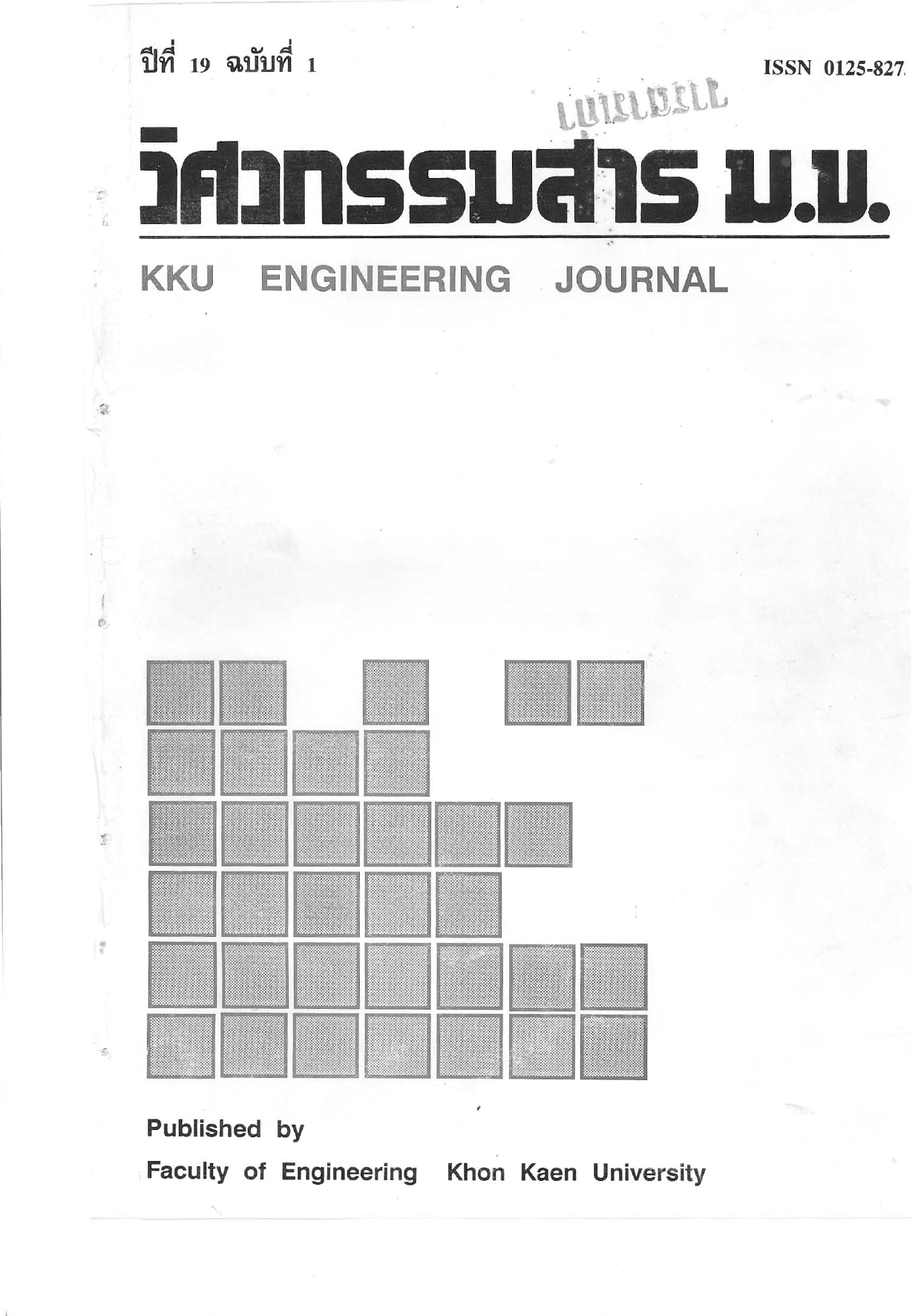HYDROLOGIC MODEL OF SMALL WATERSHED FILLING WITH WEIRS AND PADDY LAND
Main Article Content
Abstract
A mathematical model was developed to represent the hydrologic system of a small watershed
in rural areas of Thailand typically filling with weirs and paddy land. Emphases were made in
modelling on t he unique characteristics of land use as paddy land with suppementary irrigation from
diversion weirs built along the streams and also on the use of commonly available input data.
A watershed is divided into smaller catchment areas, one foreach weir. Each catchment
area consists of natural land and paddy land. The paddy area is further divided
into command area receiving diverted water from weir and noncommand area which is
rainfed. The Curve Number method is used to determine the runoff from the natural
land. The Water Balance method is used for the paddy area. There are four model
parameters that can be optimize dusing observed rainfall-runoff data for the best of
representation of watershed characteristics. The model inputs are : daily rainfall, daily pan
evaporation, areas of different land uses andsoil types, number of weirs, depth-widthlength-
slope of stream at each weir, and other watershed characteristic parameters. The
model output is runoff hydrograph at the watershed outlet and other interested quantities.
Sensitivity analysis indicated that the runoff hydrograph was most sensitive to th e
surface and subsurface water routing times. The model was used to simulate the
hydrologic system of asmall watershed of 143 square kilometers in Northeast Thailand.
The best estimates of model parameters for the watershed were obtained and t~l
used in the prediction of runoff hydrograph in1989. The predicted rUlloff hydrograph~
agree well with the observed data with the exception that the predicted runoff are
lower than the observed values during the early rice growing period. Nevertheless, the
model serves as a useful tool for small watershed management.
in rural areas of Thailand typically filling with weirs and paddy land. Emphases were made in
modelling on t he unique characteristics of land use as paddy land with suppementary irrigation from
diversion weirs built along the streams and also on the use of commonly available input data.
A watershed is divided into smaller catchment areas, one foreach weir. Each catchment
area consists of natural land and paddy land. The paddy area is further divided
into command area receiving diverted water from weir and noncommand area which is
rainfed. The Curve Number method is used to determine the runoff from the natural
land. The Water Balance method is used for the paddy area. There are four model
parameters that can be optimize dusing observed rainfall-runoff data for the best of
representation of watershed characteristics. The model inputs are : daily rainfall, daily pan
evaporation, areas of different land uses andsoil types, number of weirs, depth-widthlength-
slope of stream at each weir, and other watershed characteristic parameters. The
model output is runoff hydrograph at the watershed outlet and other interested quantities.
Sensitivity analysis indicated that the runoff hydrograph was most sensitive to th e
surface and subsurface water routing times. The model was used to simulate the
hydrologic system of asmall watershed of 143 square kilometers in Northeast Thailand.
The best estimates of model parameters for the watershed were obtained and t~l
used in the prediction of runoff hydrograph in1989. The predicted rUlloff hydrograph~
agree well with the observed data with the exception that the predicted runoff are
lower than the observed values during the early rice growing period. Nevertheless, the
model serves as a useful tool for small watershed management.
Article Details
How to Cite
Wirojanagud, P., Apichatvullop, A., & Udomchai, A.-. (2013). HYDROLOGIC MODEL OF SMALL WATERSHED FILLING WITH WEIRS AND PADDY LAND. Engineering and Applied Science Research, 19(1), 31–40. retrieved from https://ph01.tci-thaijo.org/index.php/easr/article/view/8150
Issue
Section
ORIGINAL RESEARCH
This work is licensed under a Creative Commons Attribution-NonCommercial-NoDerivatives 4.0 International License.



